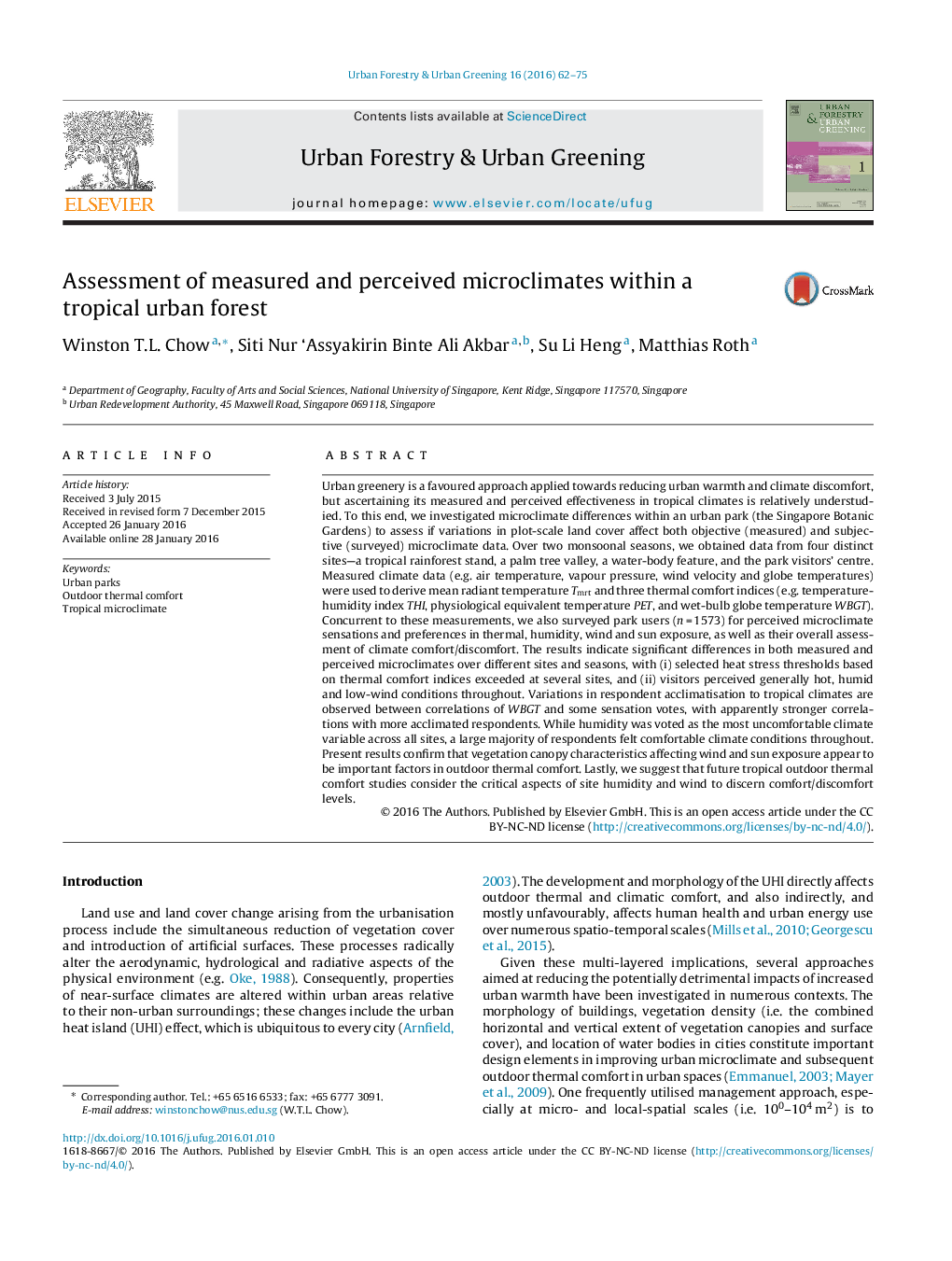| کد مقاله | کد نشریه | سال انتشار | مقاله انگلیسی | نسخه تمام متن |
|---|---|---|---|---|
| 6549719 | 160240 | 2016 | 14 صفحه PDF | دانلود رایگان |
عنوان انگلیسی مقاله ISI
Assessment of measured and perceived microclimates within a tropical urban forest
ترجمه فارسی عنوان
ارزیابی میکروکلیمات های اندازه گیری شده و درک شده در جنگل های شهری گرمسیری
دانلود مقاله + سفارش ترجمه
دانلود مقاله ISI انگلیسی
رایگان برای ایرانیان
کلمات کلیدی
پارک های شهری، راحتی حرارتی در فضای باز، محیط اطراف گرمسیری،
موضوعات مرتبط
علوم زیستی و بیوفناوری
علوم کشاورزی و بیولوژیک
جنگلداری
چکیده انگلیسی
Urban greenery is a favoured approach applied towards reducing urban warmth and climate discomfort, but ascertaining its measured and perceived effectiveness in tropical climates is relatively understudied. To this end, we investigated microclimate differences within an urban park (the Singapore Botanic Gardens) to assess if variations in plot-scale land cover affect both objective (measured) and subjective (surveyed) microclimate data. Over two monsoonal seasons, we obtained data from four distinct sites-a tropical rainforest stand, a palm tree valley, a water-body feature, and the park visitors' centre. Measured climate data (e.g. air temperature, vapour pressure, wind velocity and globe temperatures) were used to derive mean radiant temperature Tmrt and three thermal comfort indices (e.g. temperature-humidity index THI, physiological equivalent temperature PET, and wet-bulb globe temperature WBGT). Concurrent to these measurements, we also surveyed park users (n = 1573) for perceived microclimate sensations and preferences in thermal, humidity, wind and sun exposure, as well as their overall assessment of climate comfort/discomfort. The results indicate significant differences in both measured and perceived microclimates over different sites and seasons, with (i) selected heat stress thresholds based on thermal comfort indices exceeded at several sites, and (ii) visitors perceived generally hot, humid and low-wind conditions throughout. Variations in respondent acclimatisation to tropical climates are observed between correlations of WBGT and some sensation votes, with apparently stronger correlations with more acclimated respondents. While humidity was voted as the most uncomfortable climate variable across all sites, a large majority of respondents felt comfortable climate conditions throughout. Present results confirm that vegetation canopy characteristics affecting wind and sun exposure appear to be important factors in outdoor thermal comfort. Lastly, we suggest that future tropical outdoor thermal comfort studies consider the critical aspects of site humidity and wind to discern comfort/discomfort levels.
ناشر
Database: Elsevier - ScienceDirect (ساینس دایرکت)
Journal: Urban Forestry & Urban Greening - Volume 16, 2016, Pages 62-75
Journal: Urban Forestry & Urban Greening - Volume 16, 2016, Pages 62-75
نویسندگان
Winston T.L. Chow, Siti Nur 'Assyakirin Binte Ali Akbar, Su Li Heng, Matthias Roth,
